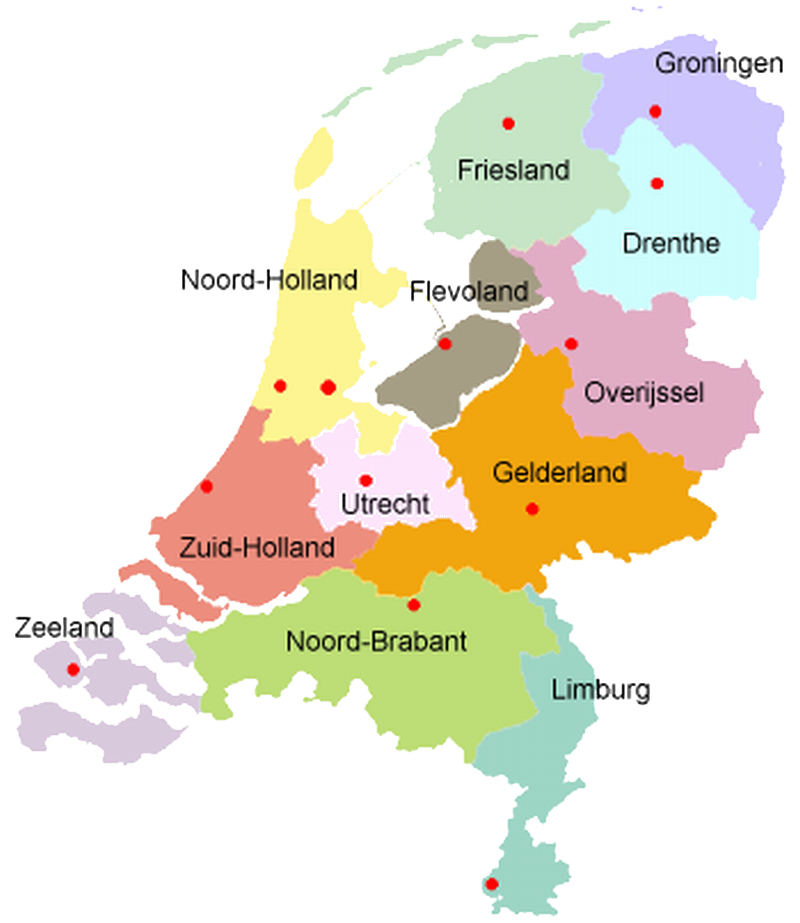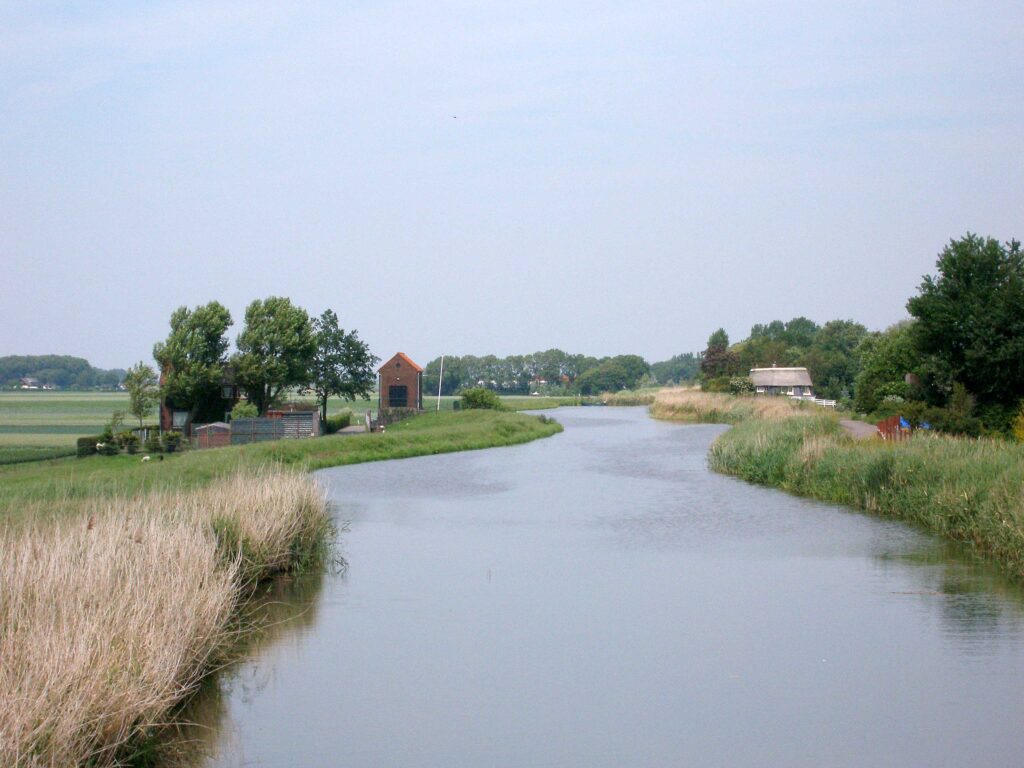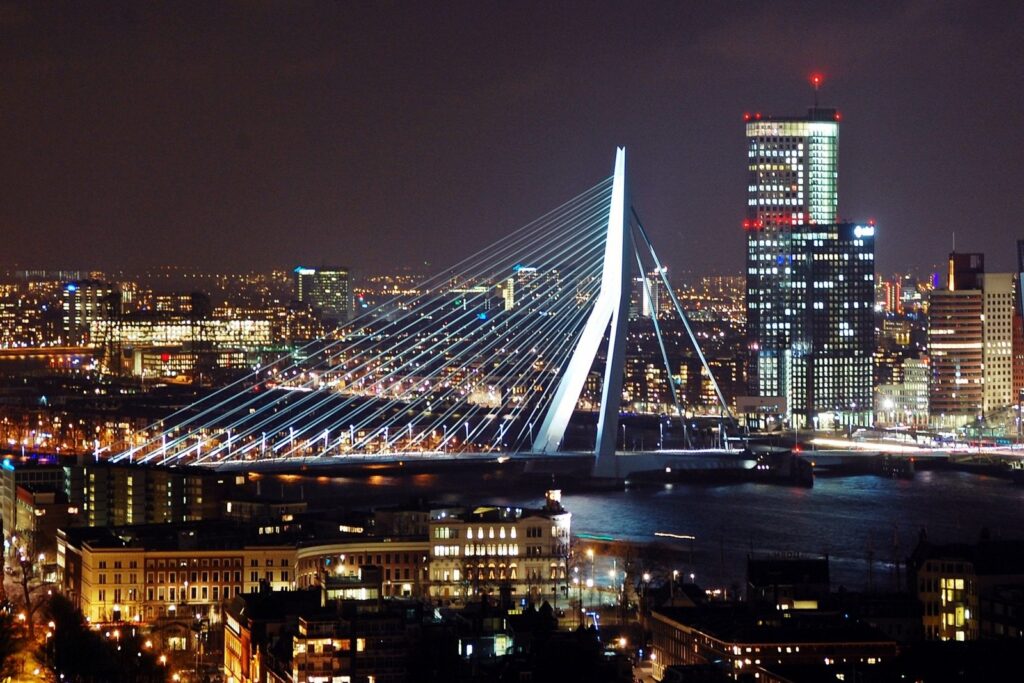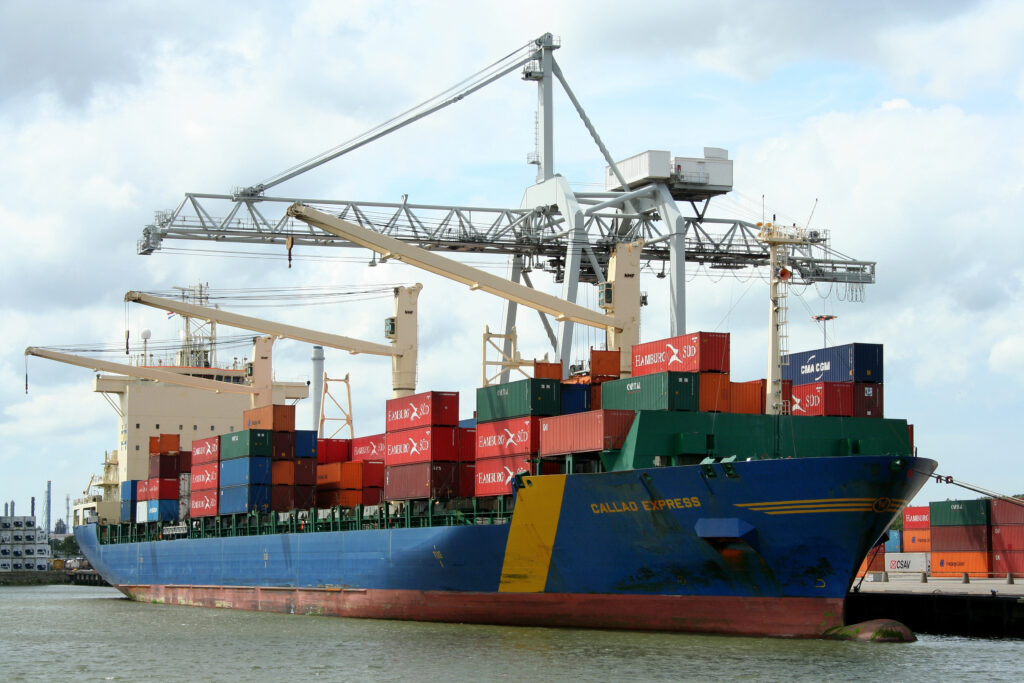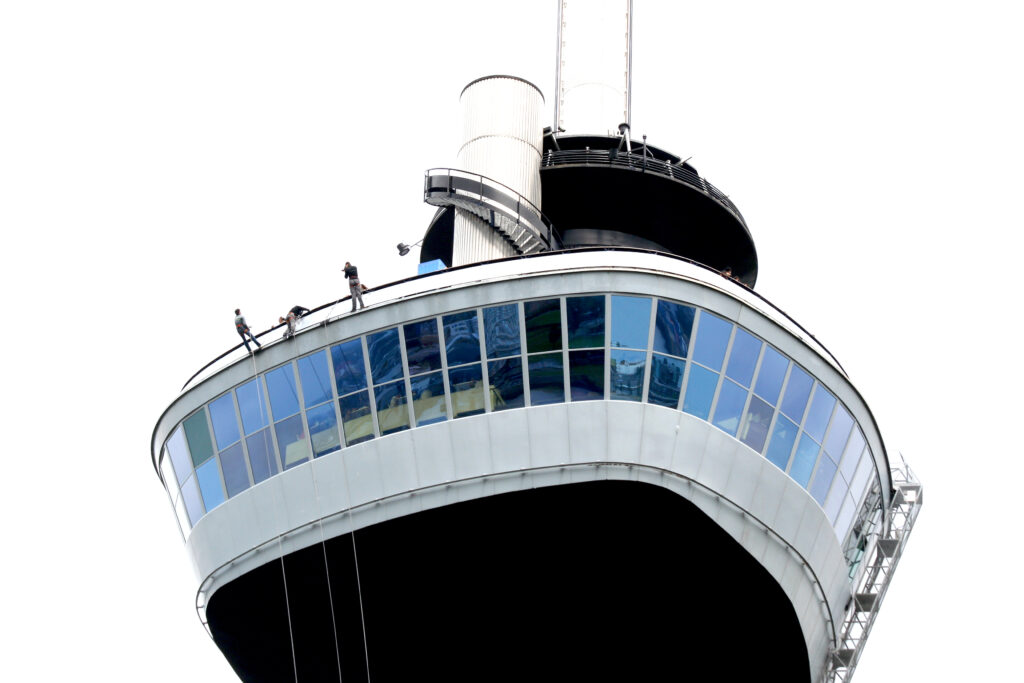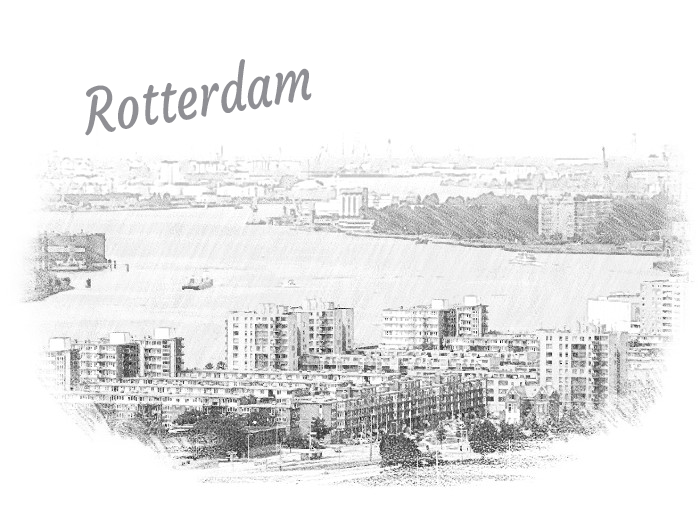
A Dynamic Tapestry of Modernity and Heritage
At first glance, Rotterdam’s skyline boasts an array of daring architectural marvels that reflect its resilience after World War II’s devastation. The iconic Erasmus Bridge and the futuristic Markthal exemplify the city’s modern spirit. However, Rotterdam’s commitment to preserving its heritage remains evident in the meticulously reconstructed historical Delfshaven district.
Central to Rotterdam’s identity is its colossal port, one of the world’s largest. It serves as a gateway to Europe and a symbol of the city’s industrious character. The Maritime Museum chronicles this maritime legacy, giving visitors a glimpse into Rotterdam’s pivotal role in global trade.
Culture flourishes in Rotterdam’s diverse neighborhoods. The Museum Quarter houses renowned institutions like the Boijmans Van Beuningen Museum, showcasing an eclectic range of art. The city’s penchant for innovation extends to the groundbreaking Dutch Institute of Architecture.
Rotterdam’s essence transcends tangible attractions; it’s an atmosphere, a feeling of progress that resonates with every visitor. The city’s commitment to sustainable urban development, epitomized by the innovative floating pavilions, underscores its forward-thinking approach.
In conclusion, Rotterdam is a microcosm of modernity and heritage seamlessly intertwined. Its ever-evolving landscape pays homage to its past while paving the way for a promising future.
Since the ninth century, the settlement of Rotta has stood on the site of the current city center of Rotterdam. It became uninhabitable in the twelfth century due to flooding of the river Rotte. Around 1270 a dam was placed in the Rotte at the spot where the Hoogstraat crosses the Rotte. Rotterdam derives its name from this. A settlement arose around this dam where people initially lived from fishing. Soon it also became a trading place and the first ports were created.
On March 17, 1299, Rotterdam received city rights from Count Jan I of Holland. Between 1449 and 1525, the late Gothic Sint-Laurenskerk was built. In medieval Rotterdam, this was the only stone building. It was an ambitious project: Rotterdam consisted of approximately 1200 houses at the time.

traffic on the nieuwe maas
Rivers flow without exception from higher areas, such as in Europe for example, the Alps, the Pyrenees, to the lowest-lying area, the water, the seas and the oceans.
The Netherlands with its rivers is no exception. Our largest rivers flow into the Netherlands to leave it later in the North Sea, at every branch or junction they change their name, so the Rhine flows from Switzerland into our country and its name soon changes to Waal. A bit confusing perhaps, but in any case, that same water flows through Rotterdam via the dug Nieuwe Waterweg to the North Sea. Just before it enters Rotterdam it is called Merwede. On this last part of the river, it is busy with shipping. A remarkable means of transport is the water bus. The water bus is a wonderful means of transport that visits all important places on the Merwede. Places such as Sliedrecht, Zwijndrecht, Papendrecht and Dordrecht can be reached by water bus in a very short time at a speed of around 50 kilometers per hour.
cENTRAL STATION
The new Rotterdam Central Station consists of an arrow-shaped entrance hall and a large glass greenhouse for tracks and platforms.
The new building replaces the station designed by architect Sybold van Ravesteijn. The letters CENTRAL STATION on the city side are a replica of the letters on the former station building. The new hall is clad with zinc on the outside. A 23,000 m² western red cedar ceiling continues above the first tracks. Daylight enters the hall through seven skylights. Thanks to this hall, the station already has various nicknames, including shark mouth and crinkle hood. The platforms are accessible via a wide tunnel. The platform roof rests on steel Y-shaped main girders and wooden purlins. The technique of the glass hood comes from greenhouse construction. The 28,000 m² roof is covered for 30 percent with PV cells. Other interventions in the station area include the construction of a car tunnel with colorful tiles, the metro station enlarged for the arrival of RandstadRail and an underground bicycle parking facility with 52,000 spaces. These parts were designed by architect Maarten Struijs.
modern city
 The bombing of Rotterdam was carried out on 14 May 1940 between 13:27 and about 13:40 by German bombers as part of the German military raid on the Netherlands.
The bombing of Rotterdam was carried out on 14 May 1940 between 13:27 and about 13:40 by German bombers as part of the German military raid on the Netherlands.The fifteen-minute bombardment destroyed almost the entire historic city center of Rotterdam, partly due to the fires that started. 711 people died, and about 80,000 residents became homeless.
The bombardment was the reaction of the German invaders to the resistance of the Dutch troops (especially at the Afsluitdijk, on the Grebbeberg and at the Moerdijk bridges), which slowed down the German advance.
The Germans had planned a rapid advance through the Netherlands, Belgium and Luxembourg in the campaign against France. The bombardment led to the surrender of Rotterdam the same day and under the threat that other cities would also be bombed, starting with Utrecht, to the surrender of the Netherlands on May 15, 1940.
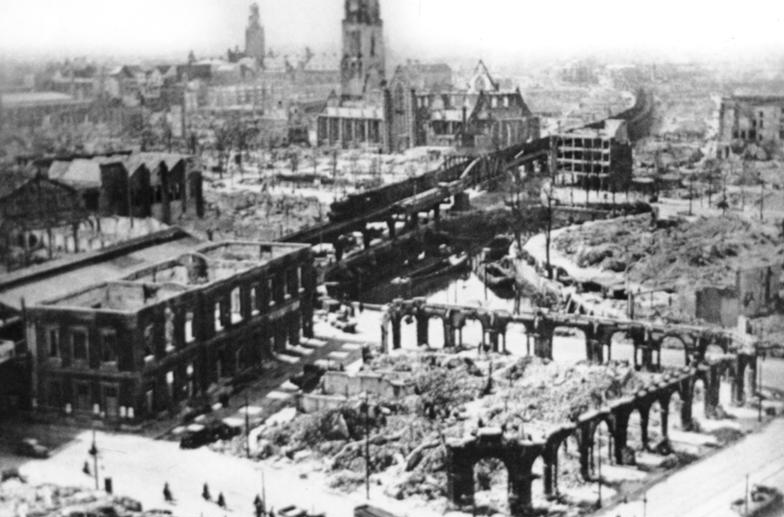
Rotterdam has become a cradle for innovative architecture, including the Erasmus Bridge, the Cube Houses and a large number of skyscra
port rotterdam
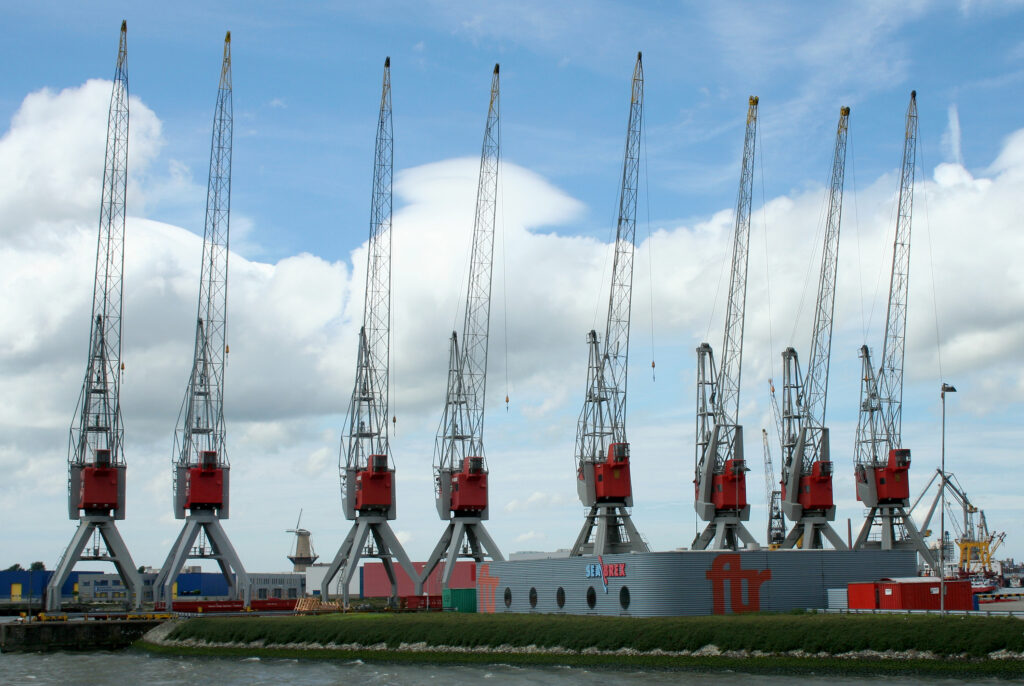
Rotterdam was the largest port in the world between 1962 and 2004, but this position has been taken over by Shanghai. Singapore, Canton, Qingdao, Port Hedland and Tianjin have also surpassed Rotterdam as a port in size.
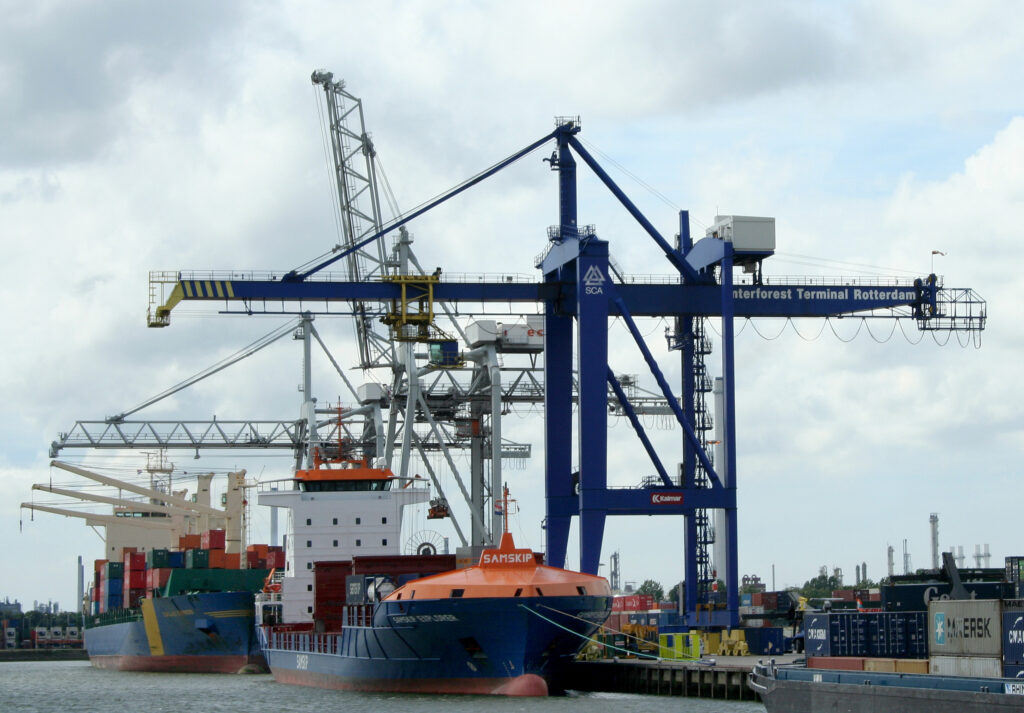 However, Rotterdam is still by far the largest European port.
However, Rotterdam is still by far the largest European port.
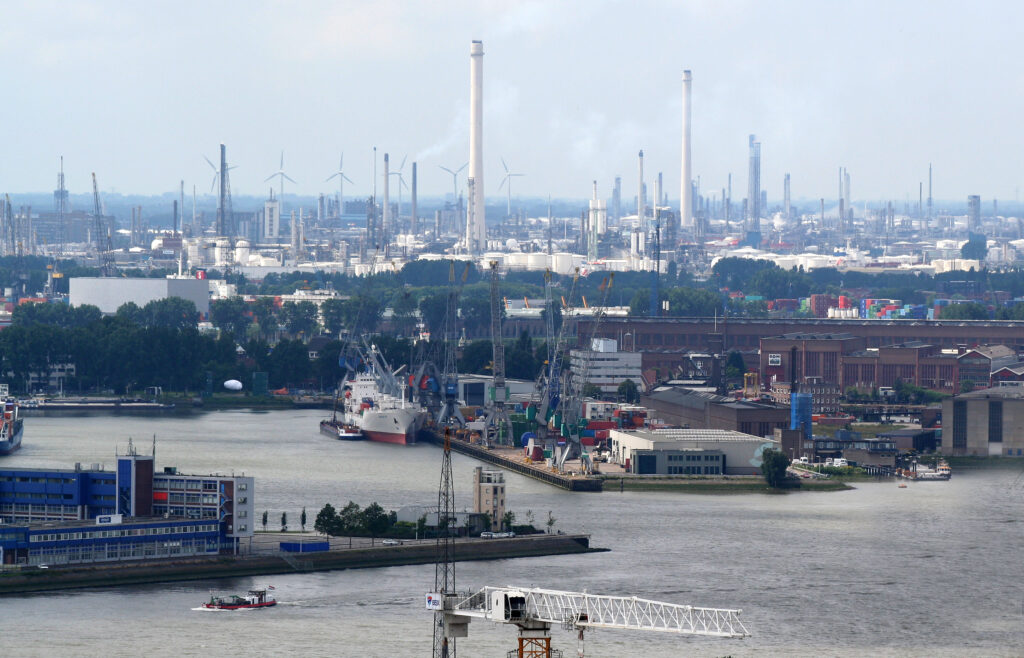
It consists of a combination of different harbor basins and industrial sites that serve the supply and removal of goods from the (petro)chemical and other industries located at the ports, and the storage and transshipment of goods from third parties for further transport.

Spido boat cruises
Experience the world’s smartest ports in all its glory!
Among the busy traffic of sea-going and inland ships, this trip is a special journey through one of the largest harbours in the world.
You can see Rotterdam’s impressive skyline with its imposing buildings glide by, and then get a unique view of the harbours shipyards, docks and the hypermodern transshipping of thousands of containers. Last but not least the tour will end with a view of the steamship ‘Rotterdam’, the former cruise flagship of shipping company Holland America Line. An exciting 75 minutes with clear descriptions of everything you see.
During the tour you will experience Rotterdam as it is: raw and industrial. With a surface area of more than 12,600 hectares, the port of Rotterdam is the largest in Europe and the period of growth is far from over.
The port is definitely not boring and ugly. It is the beating heart of the region. The tour takes you through the history and the current status of the port of Rotterdam.
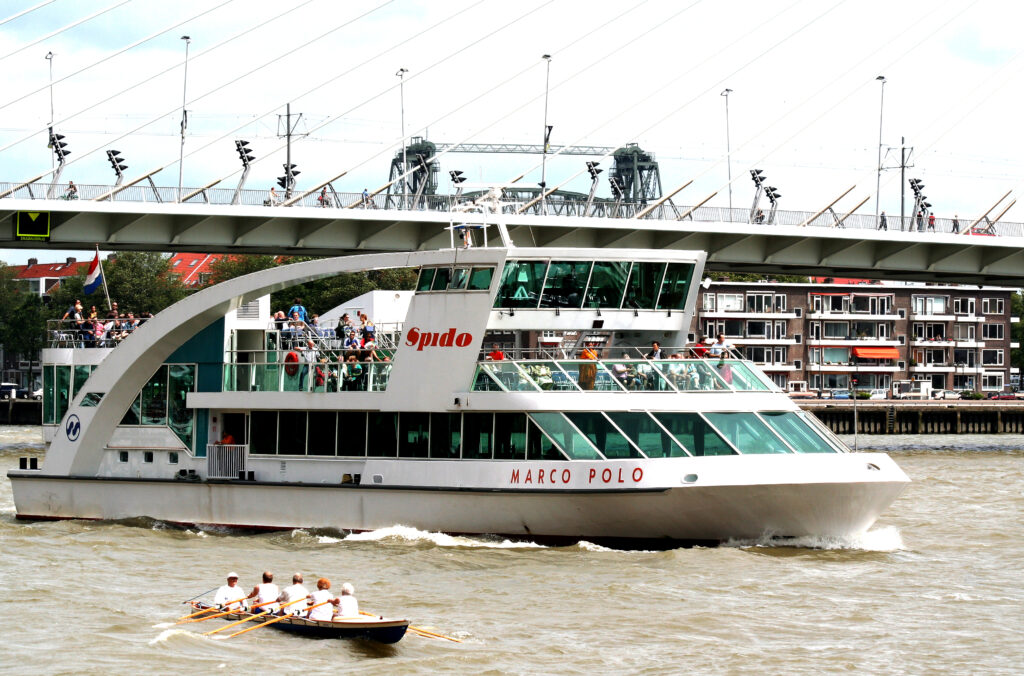


After the end of the French period, the city received a new coat of arms that closely resembled the one used for the introduction of the Napoleonic coat of arms.
The new coat of arms has a number of adjustments compared to the old coat of arms: the two sighted (looking at the spectator) lions as shield holders standing on a lawn and the crown on the shield. The old coat of arms did not carry a crown and the new coat of arms carries a crown of graves. This coat of arms was granted by royal decree on 16 July 1816.

the maasboulevard
The tidal river De Nieuwe Maas flows cheerfully winding through Rotterdam, past the contemporary exuberantly modern shaped high-rise and along the various ports. There is always something to do on the Nieuwe Maas, and looking out over it is a party every day. The northern bank is called Maasboulevard.
The markthal
Markthal is the first covered market floor in the Netherlands. Good food and unique living come together in the spectacular arch.
Due to a change in European regulations, the sale of, for example, meat, fish and cheese in the open air had to comply with increasingly strict rules.
This was seized upon by the city of Rotterdam to start one of the most ambitious projects of recent years: building the most unique covered fresh market in the world.
The shape of the building may be special, but the inside is nothing less! Artist Arno Coenen created the largest work of art in the Netherlands: the Horn of Plenty. With its surface of 11,000m2 and bright colors, it is not strange that it is also called the Sistine Chapel of Rotterdam.

euromast
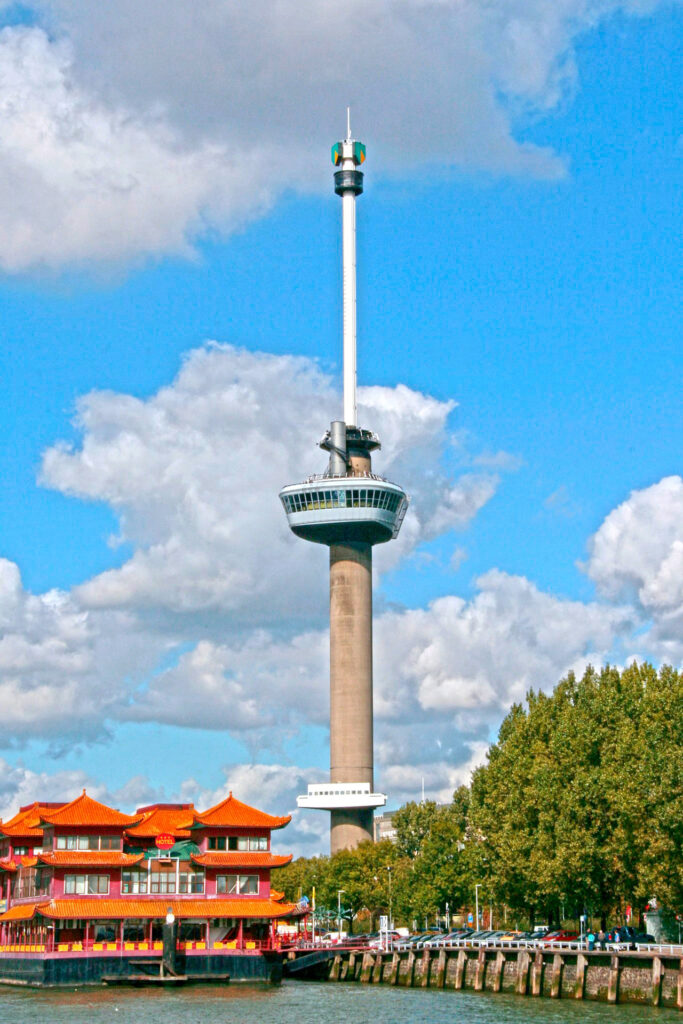
The Euromast is a 185 meter high watchtower.
The restaurant was brought to an altitude of 100 meters in five days via jacking. The tower was equipped with a replica of a ship’s bridge at a height of 32 meters, giving the public an impression of navigation equipment and a map room.The tower is made of reinforced concrete and has a diameter of 9 meters and walls of 30 centimeters thick. In order to keep the centre of gravity as low as possible – and thus increase stability – the foundation consists of, among other things, a block of concrete of 1,900,000 kg. The restaurant, made of steel, hangs 96 meters above the ground and weighs 240,000 kg.






